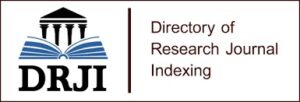The Effectiveness of Enforcement mechanisms in Protection of Women’s Rights to Work: A Specific Focus to the Committee on Elimination of All Forms of Discriminations Against Women
This study critically analyses the effectiveness of enforcement mechanisms in the protection of women’s rights to work with a specific focus on the role of the Committee on the Elimination of All Forms of Discrimination Against Women (CEDAW). The article examines the Committee’s mandate to ensure compliance through general recommendations and reporting procedure. Despite widespread ratification of the Convention on the Elimination of All Forms of Discrimination Against Women, enforcement of its provisions remains a challenge especially in conflicts affected States like Afghanistan. Using a qualitative doctrinal research methodology, the article analyses barriers hindering the CEDAW Committee from monitoring treaty obligations related to women’s rights to work at domestic level. Through a comparative analysis of three countries, Tanzania, South Africa and Afghanistan the study explores how differing domestic and regional contexts affect the Committee’s ability to monitor and influence compliance. Tanzania and South Africa are used as reference points for positive practices while Afghanistan is analysed as a case of non-compliance. The analysis reveals critical weakness in enforcement mechanisms like lack of binding nature of its recommendations, lack of regional human rights mechanisms, ineffective national human rights institutions, State sovereignty principle, Lack of Non-government Organization participation as well as conflict in interpretation of Islamic sharia. The article concluded by proposing strategic recommendations which enable effective protection of women’s rights to work.
Keywords: Human right, right to work, women’s right to work, State compliance, enforcement Mechanisms




















